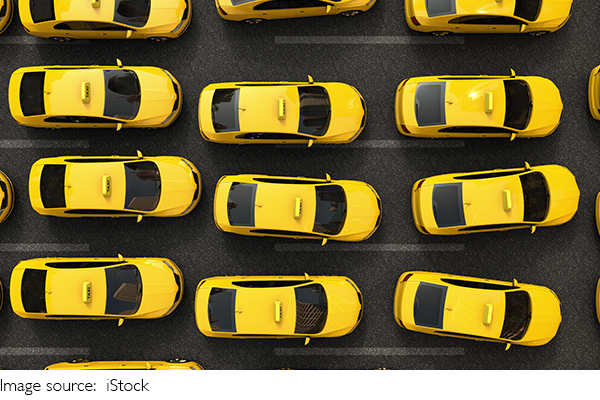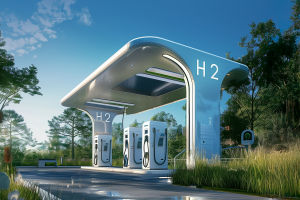Future Cities Evolving

Hey, have you ever wondered how the car of the future will change the cities we live in? It's an exciting time, as the rapid pace of automotive innovations is influencing not only how we drive but also how our cities are planned and built.
With advances like electric vehicles (EVs), car-sharing programs, and autonomous driving technology, our urban spaces are on the brink of transformation.
In this article, we'll explore how these automotive innovations are shaping the future of our cities. From cleaner air to smarter traffic systems, these developments are promising to make our urban environments more sustainable, efficient, and livable. Let's take a look at how we, as drivers and city dwellers, are likely to experience these changes in the years to come.
Electric Vehicles (EVs) and Sustainable Cities
One of the most groundbreaking innovations in the automotive industry is the rise of electric vehicles (EVs). As more people make the switch to EVs, cities are evolving to accommodate them. Unlike traditional gas-powered vehicles, EVs produce zero tailpipe emissions, which means cleaner air and less pollution in our streets.
The adoption of EVs is prompting major changes in urban planning, especially in terms of energy infrastructure. As more people drive EVs, cities are investing in charging stations and expanding their networks to make it easier for drivers to charge their vehicles. Imagine being able to charge your car while you shop or grab a coffee, just like charging your phone. This is becoming a reality in many cities, and it's likely to grow as EV adoption continues to rise.
Additionally, the shift toward EVs is encouraging cities to focus on renewable energy sources to power these vehicles, further reducing their carbon footprint. We are seeing the development of urban spaces that are more energy-efficient, sustainable, and eco-friendly, making EVs a crucial part of future cities.
Car-Sharing: Redefining Ownership and Reducing Congestion
In urban areas, where space is limited and traffic congestion is a daily struggle, car-sharing services are gaining popularity. Companies like Zipcar, Turo, and Car2Go are leading the charge in providing flexible, on-demand access to vehicles without the need for car ownership. This shift is reshaping how we think about transportation.
The rise of car-sharing is closely tied to the growing trend of sustainable mobility. Instead of owning a car that sits unused for much of the day, urban dwellers are opting for shared vehicles that can be accessed when needed, saving them money, reducing parking demand, and cutting down on traffic. In fact, studies show that for every shared vehicle, up to 13 privately owned cars can be taken off the road. This could have a major impact on reducing congestion and freeing up valuable urban space.
Cities are also adapting by creating more designated parking spots for car-sharing vehicles, and even integrating these services into public transportation systems. For example, a commuter could use a shared car to get to a subway station, further connecting car-sharing with other forms of public transport. This seamless integration will make urban mobility much more efficient and user-friendly.
Autonomous Driving: The Promise of Safer, Smarter Cities
Another exciting development in automotive technology is autonomous driving. These self-driving vehicles are not just about convenience—they hold the potential to radically change how our cities operate. Imagine a city where cars can drive themselves, communicating with each other and the surrounding infrastructure to navigate safely and efficiently. This could reduce traffic accidents, optimize traffic flow, and decrease the need for parking spaces.
Autonomous vehicles can also enhance public transportation systems. Instead of waiting for a bus that might be late, self-driving buses and shuttles could arrive on demand and take passengers to their destinations more efficiently. This on-demand service would be especially useful in less populated areas, where traditional public transit routes aren't always feasible.
Cities that embrace autonomous driving technology will need to adapt their infrastructure to ensure smooth integration. This includes installing smart traffic signals, building designated lanes for autonomous vehicles, and updating roadways to accommodate these new types of vehicles. The result will be smarter, safer, and more efficient urban spaces that benefit everyone.
Redesigning Urban Spaces for a Car-Free Future
As these automotive innovations take hold, urban planners are rethinking the entire design of our cities. One of the most exciting prospects is the idea of car-free zones. In the future, some city centers could become pedestrian-friendly, with limited or no access to traditional vehicles. This would open up space for parks, plazas, and walkable streets, creating healthier and more enjoyable environments for people to live, work, and play.
With fewer cars on the road, there would be less noise and pollution, making our cities quieter and more peaceful. This would also lead to improved public health, as more people could safely walk or cycle without the dangers of heavy traffic. Urban areas would become more connected through smart mobility solutions, where people can rely on shared cars, bikes, and public transit to get around.
Some cities, like Amsterdam and Copenhagen, are already leading the way in promoting sustainable mobility by investing in cycling infrastructure and car-free zones. This trend is likely to expand globally, with more cities prioritizing people over vehicles in their urban designs.
The Challenges Ahead: Balancing Innovation with Reality
Despite the many exciting possibilities, the integration of automotive innovations into our cities isn't without challenges. Infrastructure upgrades are required to accommodate EVs, car-sharing, and autonomous vehicles, and these can be costly and time-consuming. Additionally, issues like cybersecurity and privacy concerns around connected vehicles must be addressed to ensure a safe and secure urban environment.
Furthermore, the transition to smart cities will require cooperation between governments, automakers, and citizens. Public policies must evolve to support these innovations, and local communities will need to adapt to the changes.

Conclusion: A Glimpse of the Future
The rise of electric vehicles, car-sharing, and autonomous driving technology is set to reshape our cities in ways we're only beginning to understand. These innovations offer exciting possibilities for cleaner, safer, and more efficient urban spaces. As we continue to embrace these advancements, we're not just improving our transportation systems—we're building the cities of the future.
What do you think? Are you ready for a future where cars are no longer the center of urban life, and mobility is smarter, greener, and more accessible? Share your thoughts with us in the comments below!


